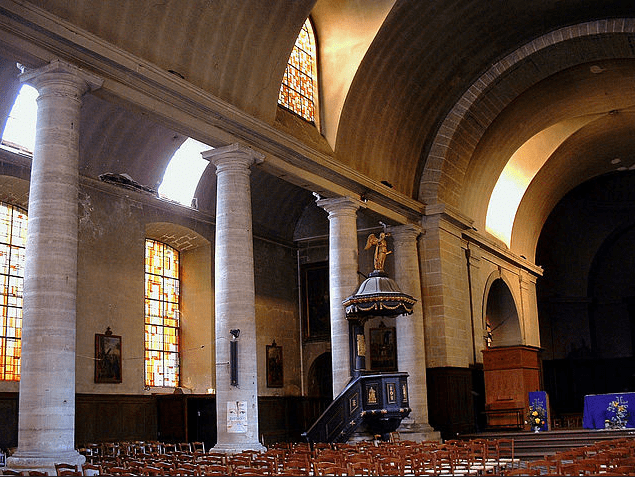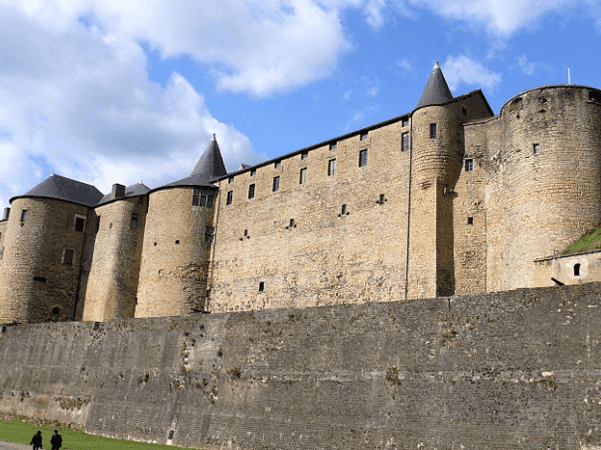Introduction: David M. Delo, an artist and writer, has spent years researching his family surname, resulting in a detailed report which he will send free to anyone interested. For our blog readers, he has summarized his findings in the following article. Note that in his genealogical research, David has followed an approach often recommended on this blog: to really get to know your ancestors, you also need to research the places and times in which they lived.
David commented: “My main track in life is to create: C.I. agent for NATO in the 60s, V.P. for a Fortune 500 company in the 70s, then recognized my creative inner child. I have authored 7 books, did photography for 30 years, and have been an artist (pen and ink, oil, and watercolor) for 25 years.”
By David M. Delo
Via the Library of Congress and National Archives, I was able to flesh out the stateside genealogy of the Delo(e) surname by 1970, and further delineated that work via the Internet in 2019. Curiosity finally led me to our surname’s country of origin: France. Our earliest written record was of Pierre Delo, who worked for the Duke of Josselin in 1232 A.D. The subsequent centuries of European history brought forth a variety of surprises.

Delo, Deloe, and De Lo were French Protestant names; that is, we were Huguenots – well, only as early as the inception of the Protestant Reformation in the early 1500s. Prior to that, there were no Protestants in France; everyone was Catholic.
For the next 250 years, Protestants were more than just social pariahs in France; from the view of 93% of les Français French who were Catholic, Huguenots (the name appeared in the early 1560s) were heretics, subject to be killed outright because of their newly-formed beliefs and concurrent dismissal of Catholicism. The Catholic special form of killing? Burning at the stake.
The French government issued a series of edicts designed to extirpate the alarming growth of these “heretical dissidents” who were discovering and taking to heart the religious theorems of Martin Luther and John Calvin. The major religious difference? Protestantism encouraged a direct relationship between the individual and God and rejected the trappings of Catholicism. Within several decades, the Protestant movement gained sufficient size to become a political force.
Because Protestants were so persecuted and Catholics were unwilling to accept the co-existence of two religions in France, the result was civil war. From 1562 to 1598, eight sporadic “Wars of Religion” ended only with creation of the Edict of Nantes in 1598, which recognized the legitimacy of Protestants and mandated that Catholics give them peace. The Edict’s attempt to permit Protestantism to thrive in France did not last.
By the last quarter of the 1600s, religious persecution of the Protestant minority, deliberately aggravated by King Louis XIV, forced the vast majority of Huguenots to convert (if temporarily) to Catholicism. Twenty-five percent of Huguenots – somewhere in the neighborhood of 200,000 people – fled to countries under Protestant rule: Switzerland, England, the Protestant segment of the Netherlands, and Germany.
Individual Delo(e)s were present during all of the Wars of Religion. Delo(e)s were also found in Huguenot-dominated towns and cities throughout France from the mid-1500s to the 19th century, notably Paris, Angers, Toulouse, Caen, Sedan, Nancy, Colombieres, and Lyons. How many Delo(e)s were sent to King Louis XIV’s fleet of galleys? Records show at least three, including one who died at the oars. That number is only the tip of the iceberg.
The Delo(e) clan found sanctuary in Sedan (a few miles south of the Belgium border). It was a Protestant haven that included a Protestant University, which became a main center for the production of Reformed pastors in France for 100 years, until Louis XIV shut it down in 1681.
More than 20 Delo families appear in the records of Sedan between the 1500s and mid-1800s. Delos, or the De Lo family, is noted as “an old family of Sedan.” The home of Henri De Lo (1612-1676) was, in 1657, located on the corner of La Place d’Armes in front of the Chateau of Sedan. In the police files of 17 June 1657, Henri was noted to possess “Seize Quartiers” – Sixteen Quarters – which denoted he possessed the Coat of Arms of his great-great-grandparents, accompanied by a five-generation genealogy outlining the relationship between them and their descendants. “Seize Quartiers” was used as a proof of nobility in Continental Europe beginning in the 1600s and achieved its highest prominence in the 1700s. Among its many advantages, it guaranteed admission to any court in Europe.
When I tailed those who fled France, I discovered the names of specific couples from Sedan who immigrated to Amsterdam. Those Huguenots who did not remain there moved to Germany or England. There may well be Delo(e) families residing in Sedan, if not Amsterdam, today.
When I began to investigate our presence in England, it was no surprise to learn that many landed on the shore of Kent County, that segment of land in southeast England closest to France. Arrivals took place in Canterbury and Maidstone, both cities of Kent, in the 1700s. In looking at London, I discovered that the earliest arrivals had birth dates as far back as the early 1600s.
I created several Delo(e) maps which showed the main areas in England where our brethren resided. Because weaving and professions associated with cloth manufacturing were so prevalent, it made sense that a handful of Delo(e)s would congregate in localities where those professions were found.
In the 1700s in America’s British Colonies, the surname Delo(e) and Dillow became virtually synonymous because of pronunciation and because so few could write. It was not surprising, therefore, that the surname Dillow was discovered to be in the same general British localities since the last decades of the 1600s.
Those of you who want the details of my European investigation of my surname are cordially invited to email me at artist.writer22@gmail.com for a free copy of what became an 84-page “White Paper.”
Related Articles:
